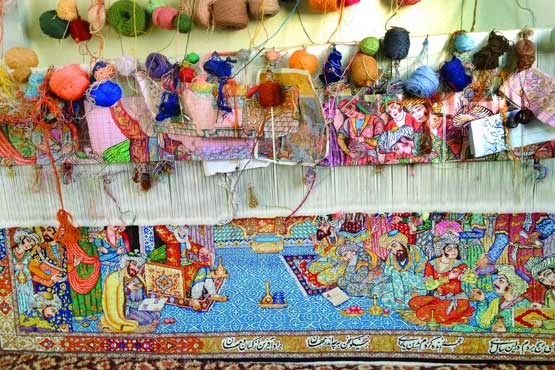The Rich Legacy of Indian Traditional Rugs and Carpets
The art of Indian traditional rugs and carpet weaving in India boasts a storied history that traces back to the reign of the great Mughal emperor Akbar (1556-1605). Akbar, renowned for his cultural and artistic patronage, invited Persian weavers and skilled pattern artists to India, primarily to craft magnificent carpets for his palatial residences. This cultural infusion led to the birth of a vibrant carpet weaving tradition in India, blending Persian artistry with Indian craftsmanship.
Golden Era of Indian Carpets
During the 16th, 17th, and 18th centuries, India emerged as a significant centre for carpet weaving, producing some of the finest carpets in the world. These masterpieces were crafted using the best quality sheep wool and silk, with intricate Persian-inspired patterns. The designs often featured floral motifs, elaborate medallions, and complex geometric patterns, reflecting the high level of skill and artistry of the weavers.
Decline and Revival
The 19th century witnessed a decline in the quality of Indian carpets due to various socio-political changes and economic challenges. However, certain regions such as Srinagar, Amritsar, and Agra continued to produce high-quality carpets on a smaller scale. The mid-20th century marked a significant turning point with India’s independence in 1947. Despite the migration of many skilled weavers to Pakistan, the Indian carpet industry experienced a renaissance. This revival was driven by a renewed focus on education and training, empowering both men and women to learn and master the art of carpet weaving.
Key Centres of Carpet Weaving
Today, Indian traditional carpets are primarily produced in several key regions, each known for its unique style and craftsmanship.
Varanasi, Mirzapur, and Bhadohi
These towns in Uttar Pradesh are renowned for their production of hand-knotted carpets and rugs, mainly of Persian design. The carpets from this region are known for their durability, intricate patterns, and vibrant colours. The materials used typically include cotton for the warp and weft and wool for the pile, ensuring both strength and comfort.
Kashmir
The carpets from Kashmir are particularly famous for their luxurious silk hand-knotted rugs. Kashmiri carpets are distinguished by their fine craftsmanship and intricate designs, often featuring elaborate floral patterns and paisleys. The materials used in these carpets include silk or cotton for the warp and weft and pure silk for the pile, resulting in a rich, lustrous finish.
Materials and Techniques
The traditional Indian carpet weaving process involves a meticulous and labour-intensive technique. The choice of materials plays a crucial role in the quality and aesthetics of the carpets.
- Warp and Weft: Typically made of cotton or silk, these threads form the foundation of the carpet. Cotton provides durability, while silk adds a luxurious feel.
- Pile: The surface layer of the carpet, made from wool or silk, contributes to the texture and appearance. Wool offers warmth and resilience, while silk adds a smooth, glossy finish.
Cultural and Artistic Significance
Indian traditional carpets are more than just floor coverings; they are cultural artifacts that reflect the rich heritage and artistic prowess of Indian weavers. Each carpet tells a story, with motifs and patterns that are deeply rooted in Indian culture and history. From the regal designs of the Mughal era to the contemporary patterns inspired by modern aesthetics, Indian carpets embody a fusion of tradition and innovation.
The legacy of Indian traditional carpets is a testament to the country’s rich cultural heritage and artistic excellence. From the Mughal era to the present day, Indian weavers have continued to create carpets that are admired worldwide for their beauty, quality, and craftsmanship. Whether made of wool or silk, each carpet represents a unique blend of history, tradition, and artistry, making Indian traditional carpets a timeless treasure in the world of textile art.

